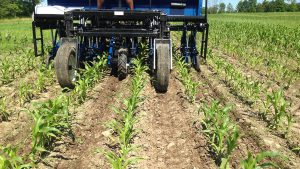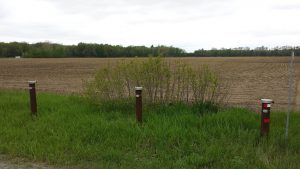Canada’s Food Guide
HOW AND WHAT WE EAT

CANADA’S FOOD GUIDE, which is developed by Health Canada, is currently undergoing revision. The aim of Canada’s Food Guide is to assist people in making healthy food choices and to promote the nutritional health of Canadians. As a key player in Canada’s food production, it is important for farmers to be aware of the food and nutrition recommendations being made to Canadians.
Canada’s Food Guide was first released to the public in July 1942 in an effort to promote the nutritional health of Canadians recognizing rations during war-time and the prevention of nutritional deficiencies. Canada’s Food Guide has been updated several times since 1942 with the last revision happening in 2007.
The Food Guide is widely used in schools and daycares as well as by dietitians and other health professionals, policy makers, and consumers. According to Health Canada’s Revision Process for Canada’s Food Guide, the revised guide will (1) aim to strengthen the recommendations for healthy eating with the intent of reducing the risk of nutrition-related chronic disease (e.g. heart disease, type 2 diabetes, obesity) and (2) communicate these messages in a way that is useful for a variety of users including the general public, health professionals, and policy makers.

CHANGES
Health Canada started the revision process by undertaking lisaa review of the evidence for dietary guidance from 2013 to 2015. On-line consultations with stakeholders were held in 2016 to identify their “needs and expectations of a revised Canada’s Food Guide”. Proposed healthy eating recommendations were developed and consumers, health professionals, and organizations had the opportunity to comment on the proposed recommendations via on-line consultations over the summer of 2017.
Health Canada’s Revision Process for Canada’s Food Guide notes that Health Canada used the “best and most recent evidence” in their decision making. The document indicates that the food and beverage industry was not specifically consulted during the process in an effort to avoid conflict of interest; industry was able to participate in the public consultations.
The proposed dietary Guiding Principles as developed by Health Canada include:
- Regular intake of fruits, vegetables, whole grains, and protein-rich foods — particularly plant-based sources of protein (which would include soy products such as tofu and fortified soy beverage). The document also lists other sources of plant protein as well as lean animal-based sources of protein.
- Limiting the intake of processed or prepared foods that are high in sodium, sugar, and saturated fat.
- The knowledge and skills that are required to support healthy eating, including (1) choosing healthy foods while shopping and eating out, (2) planning and preparing healthy meals, and (3) eating with family and friends.
- Considerations such as the determinants of health, cultural diversity, and the environment.
TIMELINE
So when will the new Food Guide be released? According to Health Canada, new food guide resources will be released in two phases with the first release expected in early 2018. This release is expected to include key messages and resources for Canadians as well as a dietary guidance policy for health professionals and policy makers. Additional resources for consumers will be made available in early 2019 as well as Part 2 of the dietary guidance policy for health professionals and policy makers.
To learn more about the proposed revisions to Canada’s Food Guide, visit Health Canada’s Revision Process for Canada’s Food Guide,
www.canada.ca/en/health-canada/services/ canada-food-guides/revision-process.html, and Guiding Principles www.foodguide consultation.ca/guiding-principles-detailed.
Lisa Mardlin Vandewalle is a registered dietitian and farms in Perth County. •




















